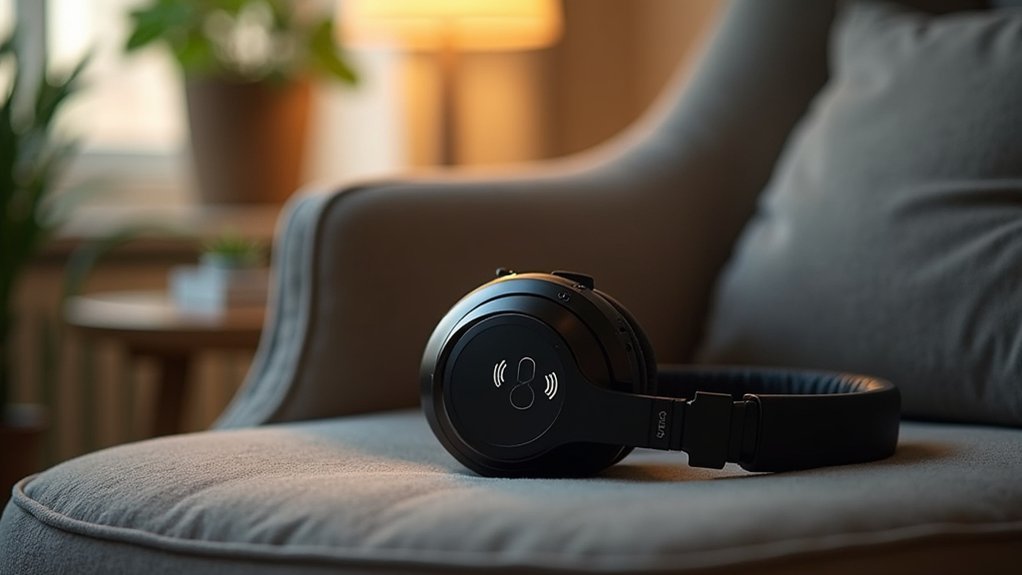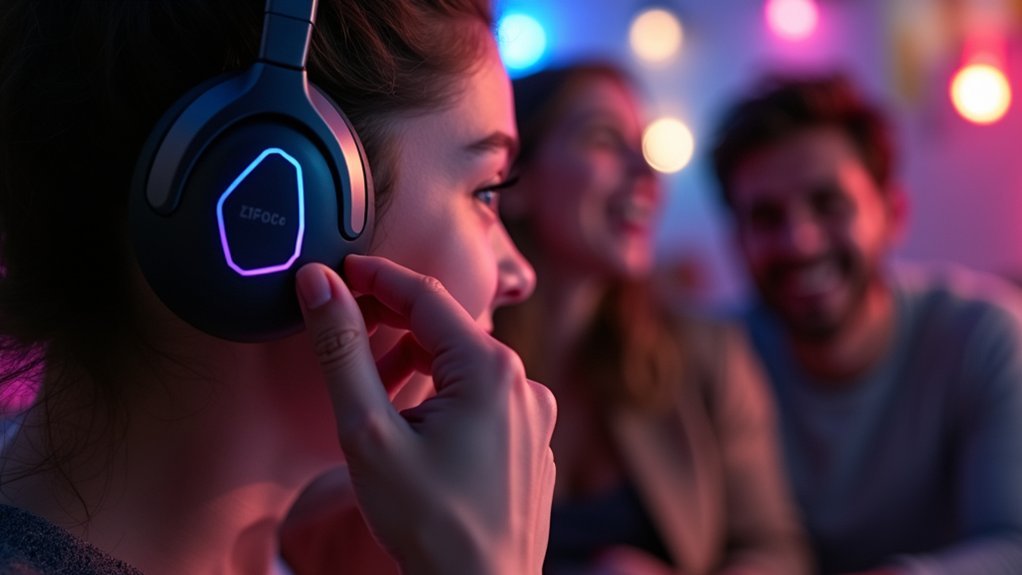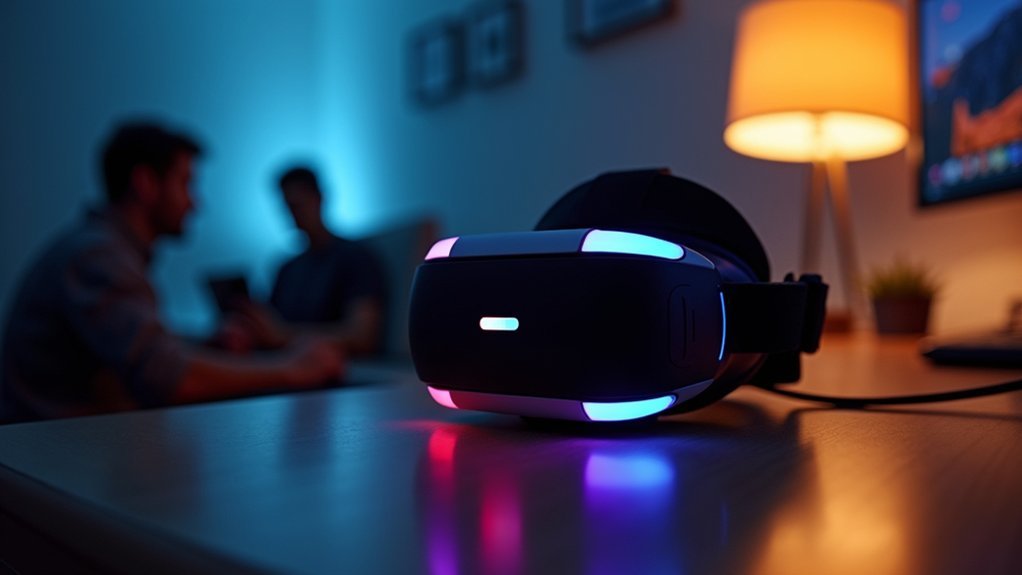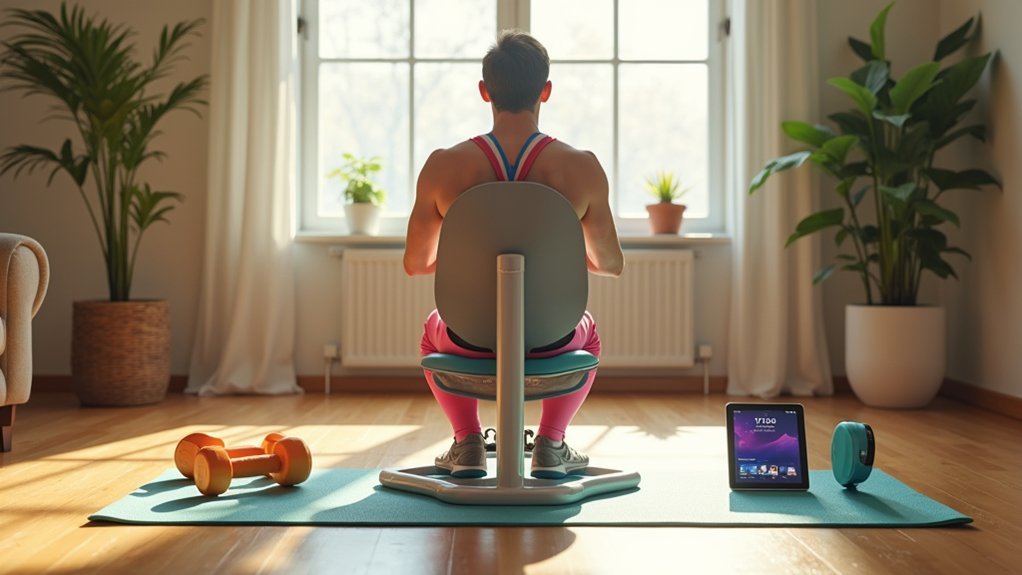You should customize headset accessibility settings because they transform your VR experience from uncomfortable to personalized perfection. These adjustments enhance audio balance for your hearing differences, reduce eye strain through visual corrections, and improve spatial awareness for safer navigation. You’ll enjoy clearer communication, reduced physical fatigue during extended sessions, and greater independence in virtual environments. Custom settings turn standard devices into tailored tools that match your sensory preferences and discover how these features revolutionize your virtual adventures.
Enhanced Comfort Through Personalized Audio and Visual Adjustments

While every user’s sensory needs differ, headset accessibility settings let you create a personalized experience that matches your specific hearing and visual requirements. You can adjust audio balance between left and right speakers to compensate for hearing differences, ensuring comfortable sound distribution.
When you adjust these settings based on your unique audiogram, you’ll achieve ideal tone and amplification for your specific needs.
Transparency mode gives you control over ambient sound levels, reducing auditory strain in various environments. You can customize Transparency mode to find the perfect balance between isolation and awareness.
Transparency mode empowers you to customize ambient sound control, creating the ideal balance between environmental awareness and focused listening comfort.
Visual accessibility features like color correction enhance comfort for users with visual impairments. These headphone accommodations transform standard devices into personalized tools that support your individual sensory preferences and comfort requirements.
Improved Safety and Spatial Awareness in Virtual Environments
Beyond personal comfort, headset accessibility settings play an essential role in keeping you safe and spatially aware within virtual environments. These accessibility features let you fine-tune audio cues to detect nearby objects and individuals effectively. When you adjust audio balance settings, you’ll distinguish sounds from different directions, vital for traversing complex virtual spaces safely.
| Setting | Safety Benefit | Impact |
|---|---|---|
| Audio Balance | Directional sound detection | Prevents collisions |
| Conversation Boost | Clear communication | Maintains awareness |
| Background Noise Control | Reduces sensory overload | Improves focus |
| Height Adjustment | Realistic perspective | Prevents disorientation |
Conversation Boost enhances communication clarity while you stay aware of surroundings. Controlling background noise levels prevents sensory overload, keeping you focused. These spatial awareness improvements transform your virtual experience into a safer, more manageable environment.
Better Communication and Social Interaction Features

When you properly configure your headset’s accessibility settings, you’ll dramatically improve communication quality and social engagement in virtual spaces.
Turn on Conversation Boost to distinguish speech from background noise more effectively, making conversations clearer and more natural. You can adjust audio balance and tone settings to match your specific hearing needs, ensuring maximum clarity during interactions.
Live Listen transforms your device into a powerful microphone, transmitting sound directly to your headset for better communication in social settings.
Transparency mode allows ambient sounds to filter through while maintaining audio quality, keeping you connected to your surroundings. These enhanced accessibility features reduce communication barriers and promote inclusive interactions.
Reduced Physical Strain and Eye Fatigue During Extended Use
As you spend more time in virtual environments, proper accessibility configurations become essential for preventing physical discomfort and visual strain. Customizing your headset’s fit and comfort settings allows you to reduce physical strain during extended sessions, preventing the discomfort that leads to shortened play times.
By optimizing audio levels, you’ll avoid excessive volume adjustments that cause ear fatigue over time.
Visual accessibility settings prove equally important for minimizing eye fatigue. Adjusting text size and implementing color correction features helps alleviate strain, especially if you have low vision or screen sensitivity.
Personalizing controller mapping enhances ergonomics, preventing repetitive strain injuries from improper button configurations. These accessibility settings work together to create a more immersive experience while decreasing fatigue likelihood during prolonged virtual sessions.
Increased Independence and Control Over Virtual Experiences

Accessibility customizations transform your virtual reality experience by putting complete control directly in your hands.
When you’re customizing headset accessibility settings, you gain increased independence to navigate virtual environments according to your specific needs. Adjusting audio balance and amplification lets you hear clearly without relying on others for assistance.
Text-to-speech features enable you to access information independently, while adjustable text sizes guarantee you can read comfortably without strain.
Personalized height adjustments allow you to interact naturally with virtual objects and interfaces, eliminating the need for workarounds or help from others.
These customization options empower you to explore, learn, and engage confidently in virtual spaces. You’ll discover that having control over these settings creates a more authentic, self-directed experience that matches your unique requirements and preferences.
Frequently Asked Questions
What Does Headphone Accommodations Do on an Iphone?
Headphone Accommodations lets you customize your iPhone’s audio settings to match your hearing needs. You can adjust tone and amplification levels, improving clarity and comfort while using any connected headphones for a personalized listening experience.
What Do Accessibility Settings Mean?
Accessibility settings let you customize your device’s audio output to match your hearing needs. You can adjust volume balance, tone, and amplification to create a personalized listening experience that’s clearer and more comfortable.
How to Improve Airpods’ Max Sound Quality?
Update your iOS to the latest version, then use Custom Audio Setup in Accessibility settings to create personalized sound profiles. Adjust EQ settings in Music app and regularly clean your AirPods Max for peak performance.
What Are the Accessibility Features of Airpods?
AirPods offer several accessibility features you’ll find helpful. You can use Transparency mode, Conversation Boost, Live Listen, Headphone Accommodations for custom audio settings, and Sound Recognition alerts for environmental awareness.





Leave a Reply